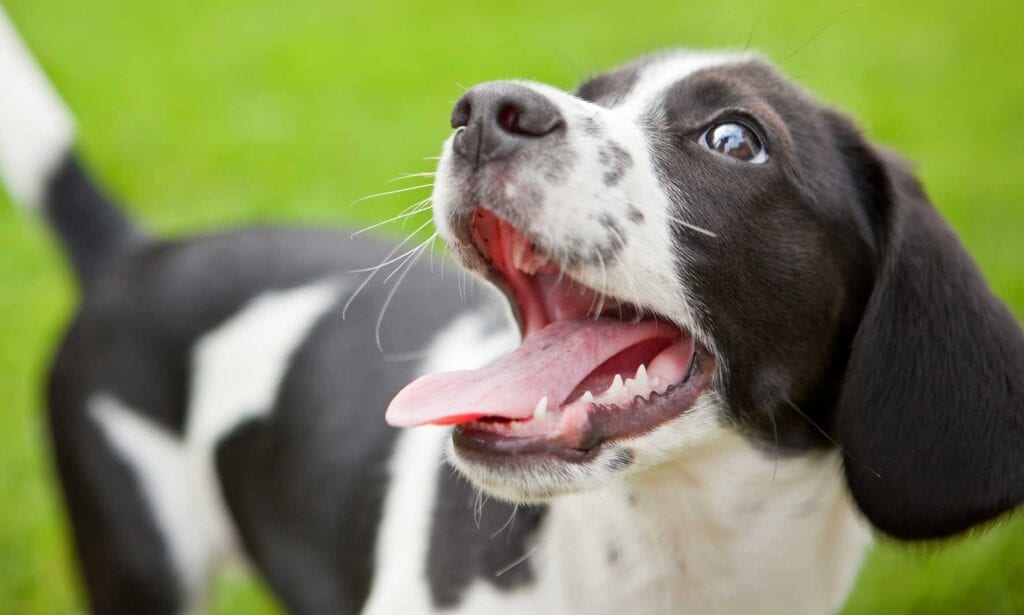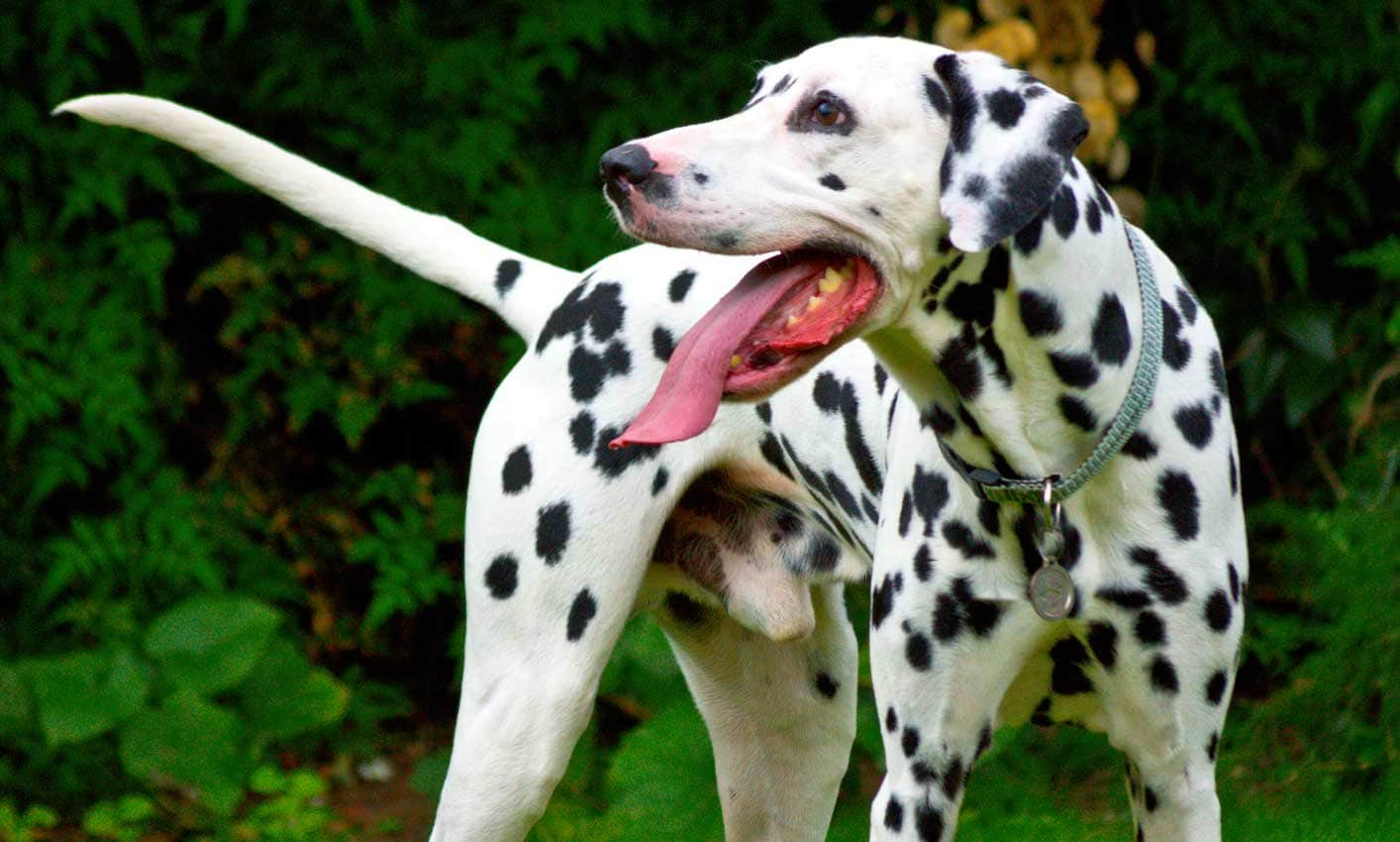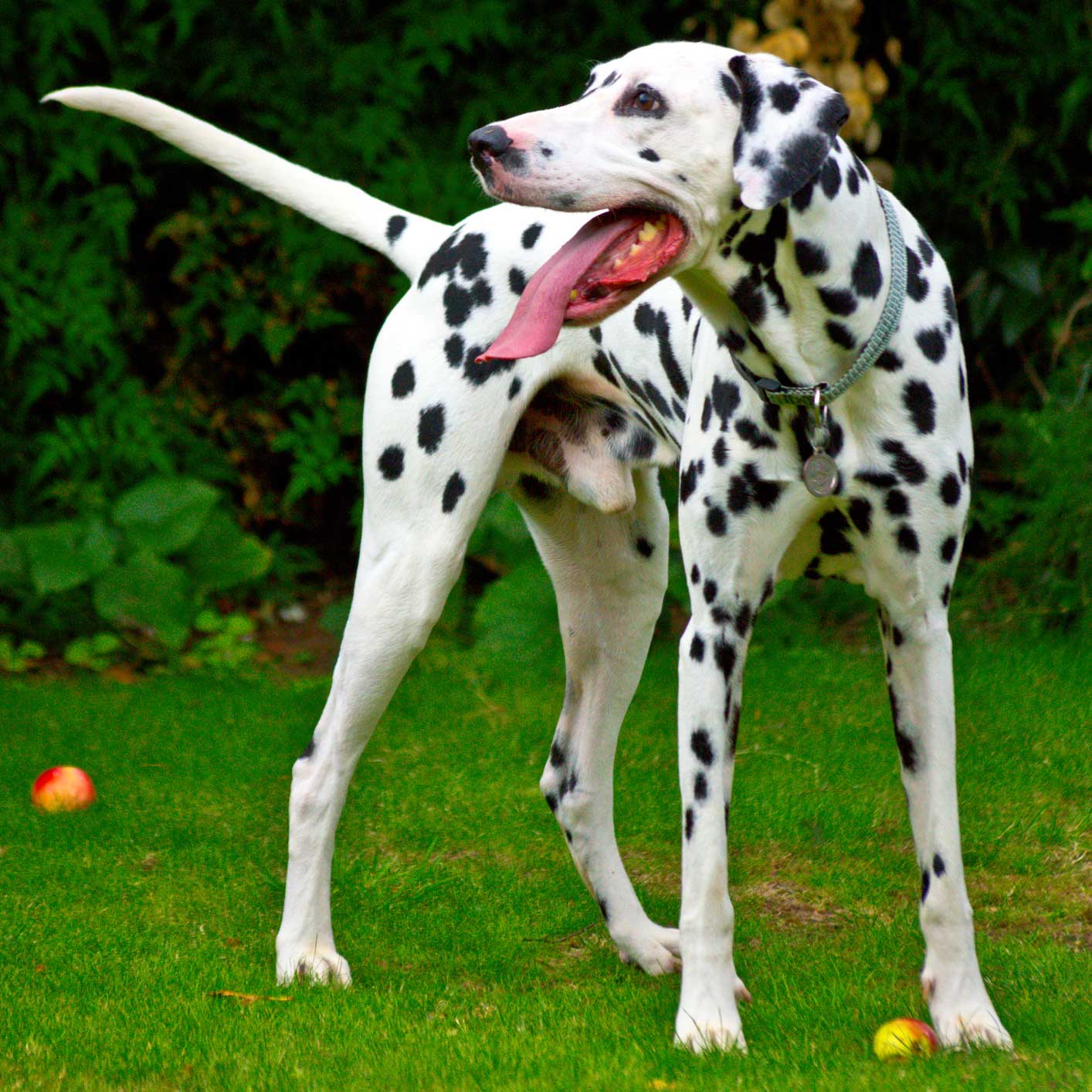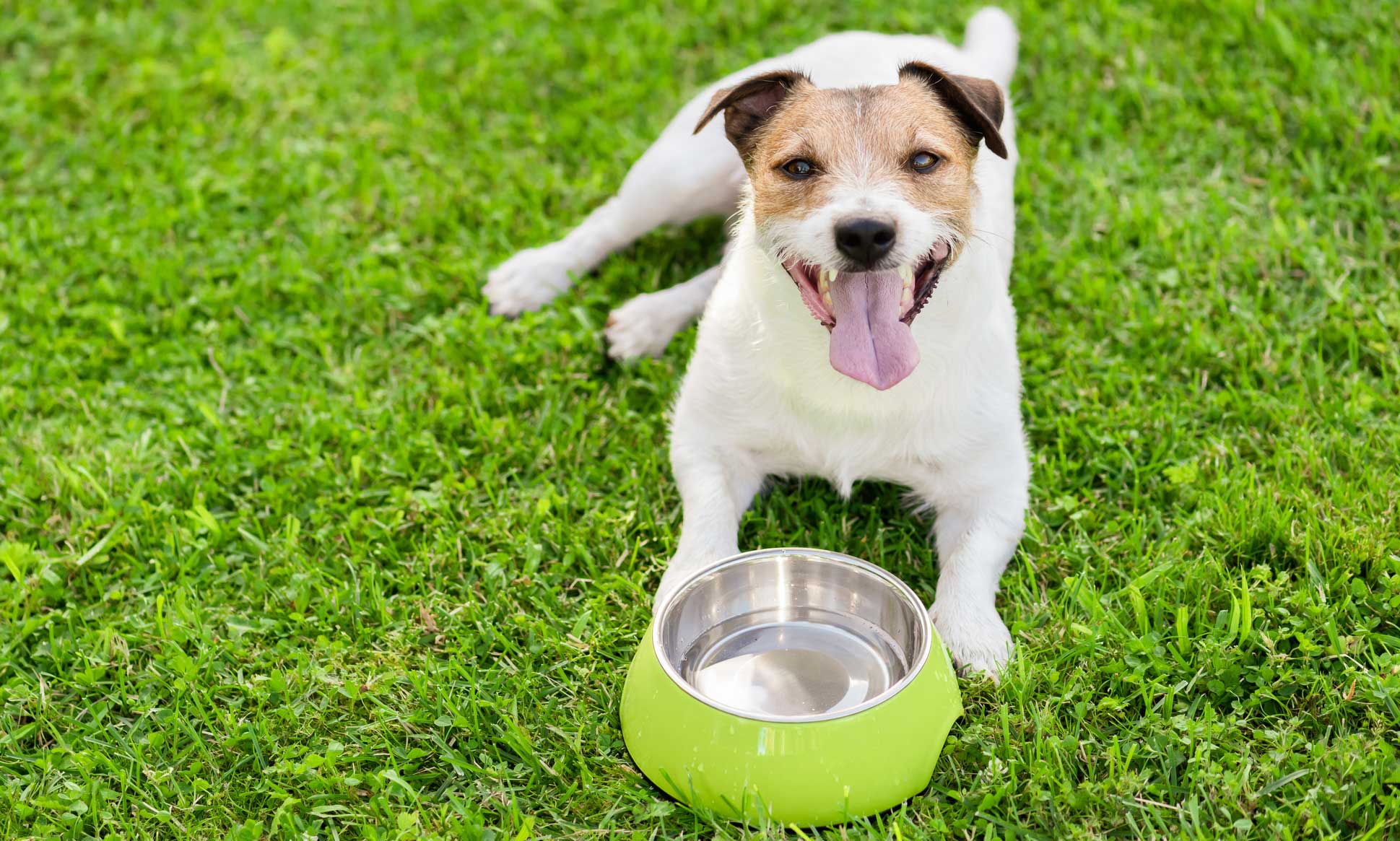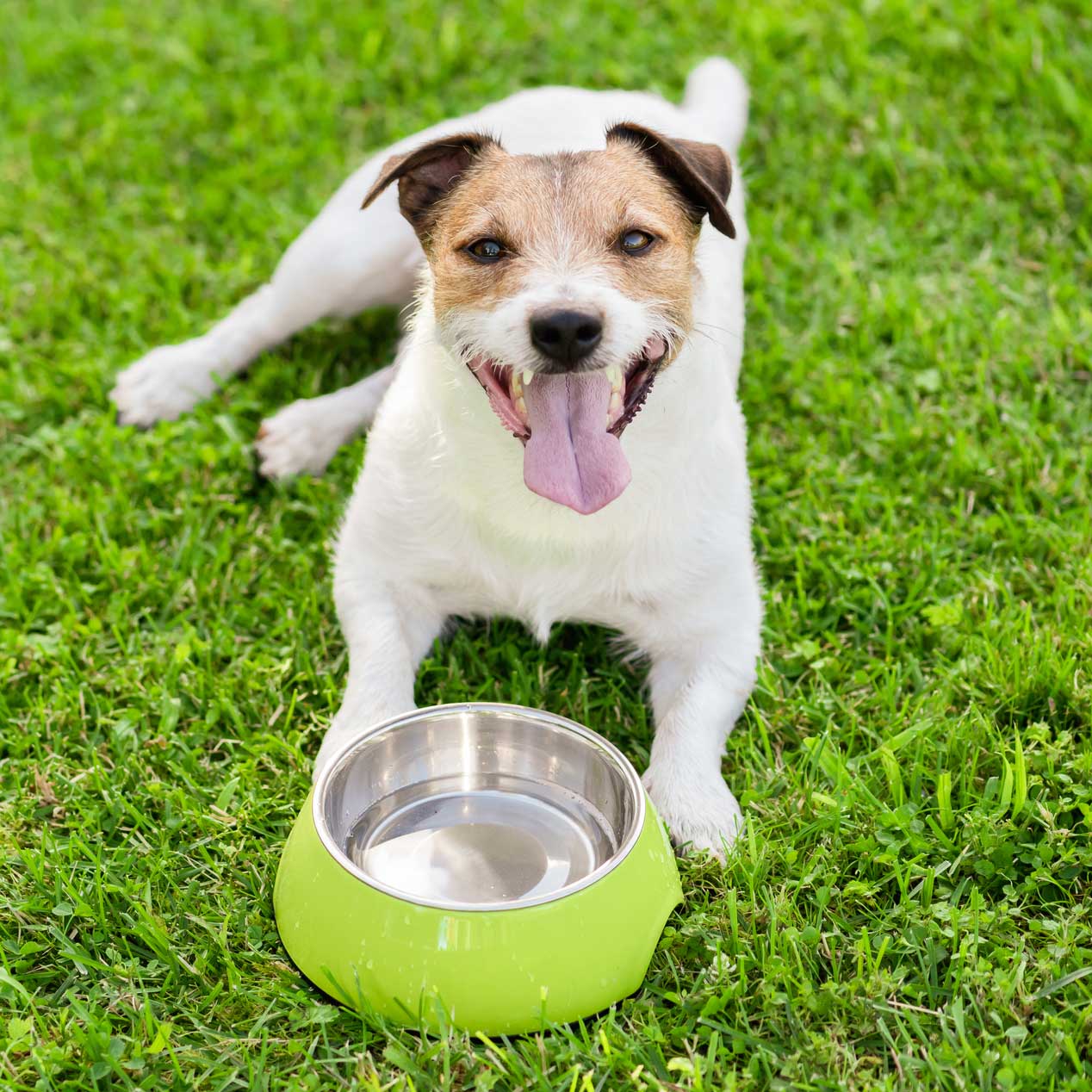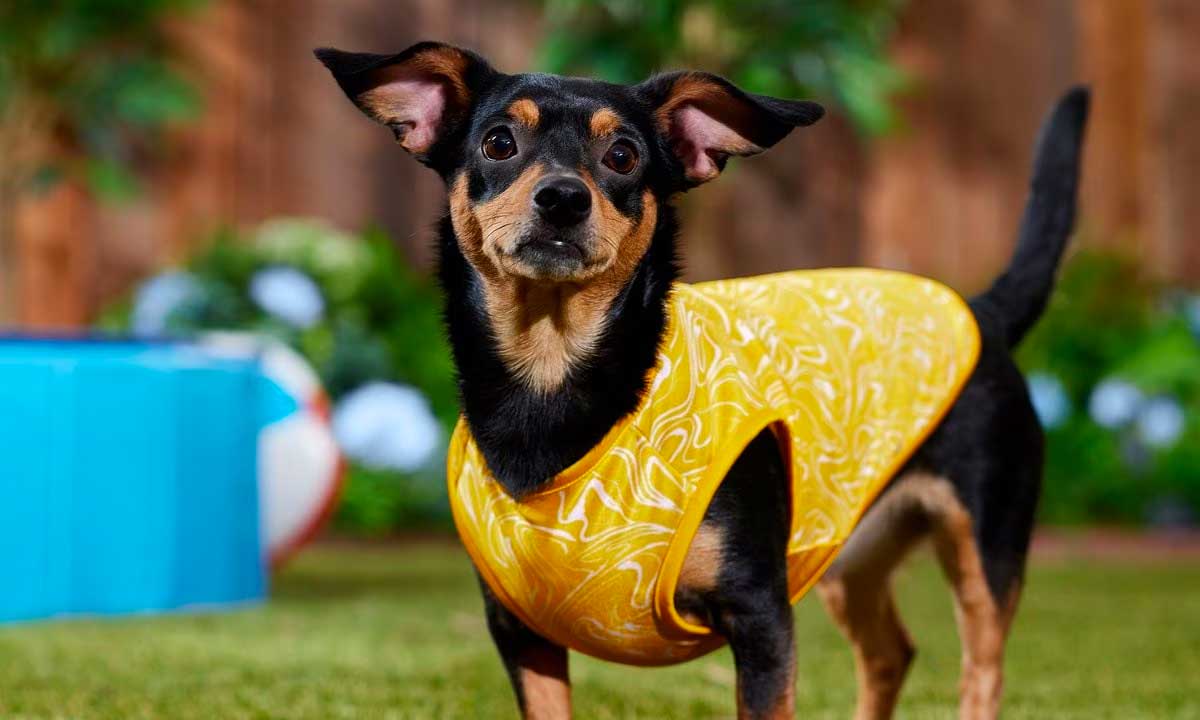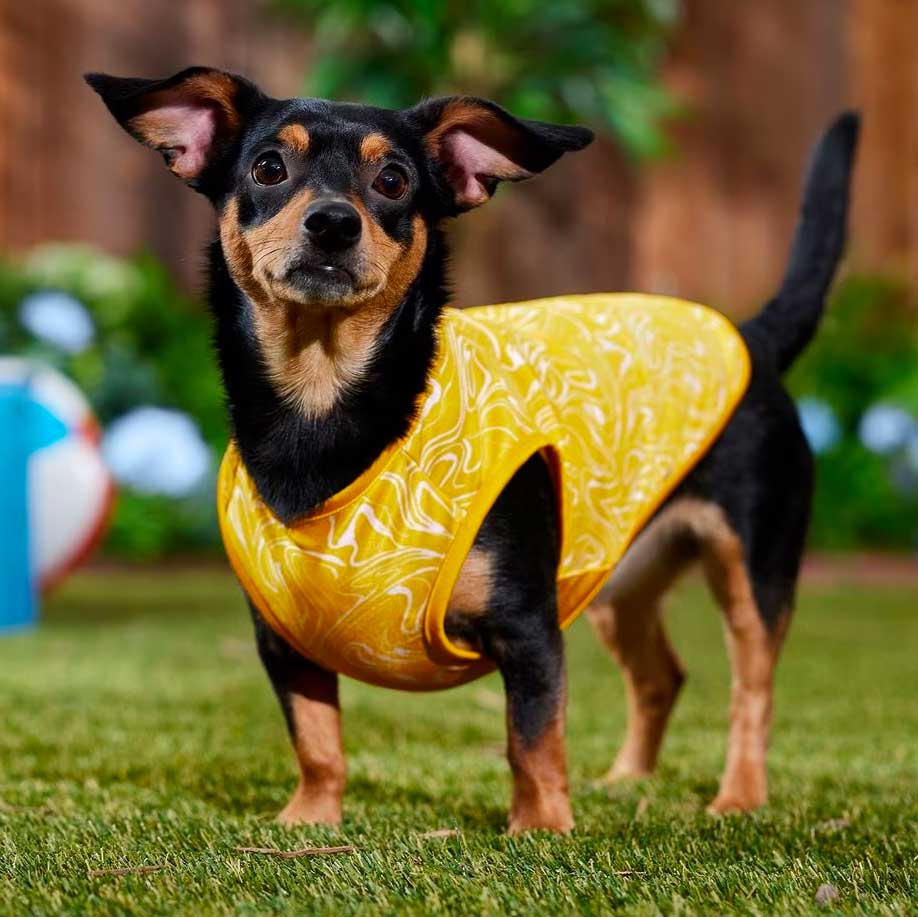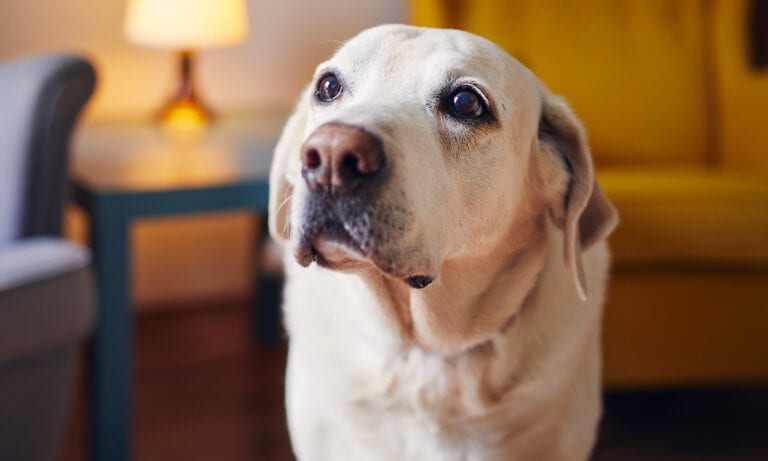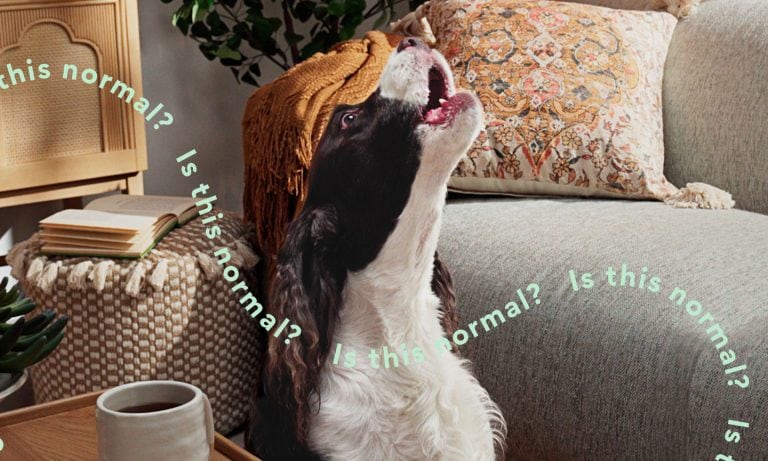Panting is a dog’s way of saying, “I’m having a great time!” It’s also a natural way for your dog to cool themself down. But excessive panting can be a warning sign that something serious is going on.
Pet health is really personal, and often, there isn’t one answer behind your dog’s behavior. We spoke to a vet expert to identify seven possible reasons for your dog’s panting, how to cool them down and when you should worry about it.
Click to jump to each section:
Reasons for Dog Panting
1 Your dog is hot, excited or thirsty.
Your dog wears a fur coat all year, regardless of whether it’s snowing or sweltering. Unlike humans, who are covered in sweat glands, dogs sweat through their paw pads and nose. So, the primary way your dog cools down is by panting, which circulates air and dissipates heat from the body, says Dr. Wendy Hauser, DVM, founder of Peak Veterinary Consulting.
“Panting is a normal reaction to physical activity,” she adds.
Here are some products that can also help cool off your pooch:
2Your dog is anxious or stressed.
Your dog can’t say, “I’m really nervous!”, but their panting tongue is often a clue that they don't feel emotionally settled.
If your dog is stressed or has separation anxiety, there will be other behavioral signs, such as pacing, hiding, whining and yawning. Other signs of nervousness include submissive body posture, including lack of eye contact and low, crouching stance and uncontrollable urination.
If you suspect your pet is anxious, talk to your veterinarian about behavioral modification or treatment with medication.
3Your dog is in pain.
Dogs may pant when they are in pain. Other signs of pain include whimpering, restless shifting and licking a specific part of the body.
“I once had a patient, a 12-year-old Labrador Retriever, who was constantly panting and restless, especially at night,” says Dr. Hauser. “Upon examination, I discovered a broken tooth! His abnormal behavior immediately stopped after I performed a root canal on the tooth—the poor guy was simply in a ton of pain!”
4Your dog is overweight.
If your dog is overweight, panting can be a sign they’re suffering from the cardiovascular ramifications of carrying around excess body weight.
Extra weight and obesity don’t just stress your dog’s cardiovascular system—it causes lasting damage to their organs, joints and bones; lowers their immune functioning; and increases the need for future medications and surgeries.
“A dog that is a normal, healthy weight will live up to 25 percent longer than an obese one,” Dr. Hauser says.
One easy way to check your dog’s weight is to feel their ribs. While you shouldn’t be able to see them (that’s too thin!), you should be able to feel each rib. If the ribs are buried under a thick layer of fat, your dog is likely overweight.
Meet with your veterinarian to determine if your dog’s weight is an issue and how to safely and effectively put them on a diet.
5Your dog is getting older.
Older dogs are more likely to be anxious, and more likely to suffer from the underlying triggers that can cause panting such as being overweight and chronic pain.
“As dogs age, they tend to have decreased sensory input from their environment,” Dr. Hauser says. “Decreased hearing and vision often result in more fearful behaviors, including panting. Arthritis in dogs [also] increases with age and is a significant reason that older dogs pant.”
Your veterinarian can help you change your older dog’s routine to ensure they’re the healthiest and happiest they can be as they age.
6Your dog is a certain breed.
Some dog breeds, typically short snout-dogs, like Bulldogs, Pugs, Boxers and Boston Terriers, are more prone to panting and heavier breathing than others. This is due to a narrow upper respiratory tract that can prevent them from getting enough oxygen.
These breeds are more at risk for heatstroke, so it’s best to limit outdoor play in hot weather.
7Your dog is on medication.
Certain medications, like prednisone, can cause panting as well as other side effects like increased thirst and urination.
Typically, your dog will adjust to medications as their body gets used to them, but if side effects persist, check in with your veterinarian.
Normal Panting vs. Excessive Panting—and When to Worry
If your dog is in distress, panting will often be accompanied by other body language and symptoms that can alert you that something is wrong with your pup.
Some of the most common causes of excessive panting include:
Heatstroke
Heatstroke occurs when your dog can’t bring their body temperature down by panting. In addition to heavy breathing, other signs of heat stroke include:
- Bright red tongue
- Thick and sticky saliva
- Weakness
- Vomiting
- Excessive drooling
- Uncoordinated movements or limping
- Increased heart rate
- Lethargy
Heatstroke is a medical emergency, so if you suspect your dog has it, bring them to the vet immediately. If left untreated, heatstroke can lead to heart failure and death.
An acute medical problem
If the panting comes on suddenly for no discernible reason, pay attention.
Acute panting can be a warning sign that your dog has ingested something poisonous or is having an allergic reaction. In these scenarios, they’re panting because they’re having trouble breathing.
The best course of action is to transport your dog to an emergency vet, especially if they’re having other symptoms, like vomiting or listlessness.
A chronic, underlying medical condition
In addition to pain, there are many medical conditions that can cause a dog to pant such as anemia, pneumonia or endocrine disorders, like Cushing’s disease, which is when the adrenal glands produce too much cortisol.
Laryngeal paralysis, which can obstruct the airway and prevent your dog from breathing deeply, can accompany Cushing’s disease.
Heart problems can also cause respiratory distress that causes excessive panting.
If your dog is displaying other unusual physical symptoms such as very pale gums, increased water consumption, extreme lethargy, vomiting, diarrhea or decreased physical activity, Dr. Hauser says you should get a veterinarian to rule out any underlying medical conditions.
How to Keep Your Dog Cool
- Keep them hydrated. Your dog should always have access to cool, clean water, but it’s even more important when you’re playing outside on a warm day.
- Take your dog to a cooler location. If you’re outside, move to a shaded area or inside.
- Put a cooling vest on them. Cooling vests are made of mesh layers that promote air circulation and water-retaining fabric that helps keep your pup from overheating.
- Apply a moist (not soaked) cloth or towel to their skin. Wet some fabric with cool water and gently place it on different areas of your dog to help them cool down. Don’t use ice cold water, which can actually narrow blood vessels and contribute to overheating.
- Use a battery-operated fan. If you’re outside on a hot day or you don’t have air conditioning in your home, you can use a battery-operated fan to try to bring your dog’s body temperature
- Mist them gently with water. Use a spray bottle to squirt cool water on your dog’s coat.
- Get a wading pool or a sprinkler. If your dog loves water, you can set up a shallow pool or turn on a sprinkler that they can run through when they start to overheat.
- Plan your walks and playtime during the coolest parts of the day. The sun is the hottest in the middle of the day, so if you can, go for walks early in the morning before the sun fully rises, or in the evening when the pavement is cool.
Read More
Share:
